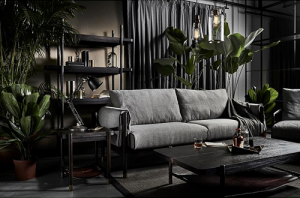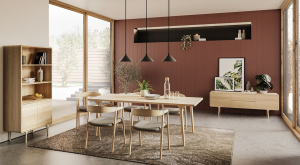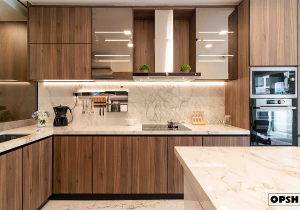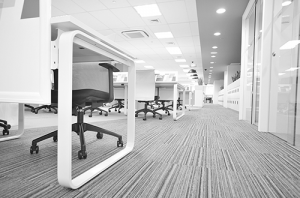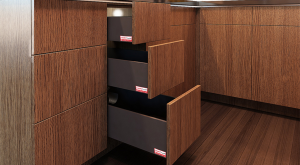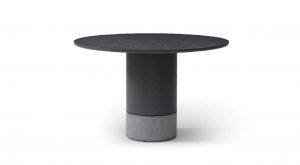Between the Virtual and the Physical: The Online B2B Marketplace as an Alternative to Physical Furniture Fairs
Dealing in highly tactile and often hefty goods, there are many reasons why the furniture industry has not embraced the digital marketplace as fully as other sectors might have. Yet, the past pandemic year has accelerated the move online for even the most robust of furniture trade fairs. As technology continues to advance digital capabilities whilst the unpredictable COVID-19 climate persists, what is the outlook for furniture trade fairs? Is there a middle ground to be struck between the benefits of going digital and the comfortable traditions of the physical fair?
By the tail end of 2020, one might say that virtual fairs have become a fixture in the furniture industry’s calendar. As a virtual counterpart to its physical edition in Shanghai, Furniture China held a three month-long Digital Trade Show from August to November that received a staggering 1,496,229 pageviews. Closer to home, the Malaysia International Furniture Fair took place online in August 2020, ahead of its physical edition that was originally slated to occur in March 2021 (now postponed to September 2021). Elsewhere in Europe, major events the likes of Maison & Objet (Paris) and Salone del Mobile.Milano (Italy) similarly hosted virtual editions or online showcases in anticipation of their physical iterations.
This proliferation of virtual furniture trade fairs is fast becoming a norm, but it begs the question of whether the industry is making a permanent move towards the digital or if this is merely a stop-gap measure while the world waits out the pandemic.
Reflecting on his experience at a virtual trade fair, Kaden Choa, Marketing Director of Singaporean hardware brand Excel Hardware shares, “Cost-wise, it was much lower as there was no need to rent a physical space. The manpower required to scale a virtual fair is also a fraction compared to that of a physical one. I also found it more productive as tending to customer enquiries digitally enables more flexibility than when we were stationed at a physical booth.”
Apart from logistical and cost efficiency, the move towards online platforms also enables fairs to reach a more international audience by offering round-the-clock support and networking opportunities unimpeded by travel restrictions. For events featuring thought-leadership seminars, the use of on-demand video enables panellists’ insights to be streamed to a global audience even after the event is long over. In many ways, virtual fairs have been able to circumvent traditional limitations of space and time posed to physical fairs.
Furthermore, another powerful tool of the virtual fair is its capability to collect and share comprehensive visitorship data that can potentially translate to new leads or define next strategies for brands seeking to break into new markets.
Will this array of advantages be sufficient for the digital to fully replace the physical? A common gripe is that there is still a long way to go before 3D showrooms are able to truly convey the touch, feel and ergonomics of products – a valid concern especially since a product’s physical qualities are integral in determining its value. It remains a challenge to convey the sense of scale and tactility through the limitations of a flat screen. And in terms of human communication, others have pointed out that video calls simply cannot replace the human touch of a face-to-face conversation.
Given the complementary advantages of the two options, a blend of virtual and physical looks set to be the way forward into these volatile times. Homegrown brand Commune is one such brand to embrace technology in a manner that complements their existing practices.
Creating virtual scans of its flagship stores, the brand enables its potential buyers to view its collection in the comfort of their own homes. It’s a strategy that has been increasingly adopted by furniture brands, especially since the onset of the pandemic. However, what is truly cutting edge is the way that Commune is incorporating technology into its in-person client services.
“We introduced a 3D floorplanner and virtual reality (VR) program in our stores that allows our customers to bring in their floor plans and let our sales designers create digital renderings of their homes with our furniture items in it,” Joshua Koh, CEO of Commune shares. “Customers can then put on a VR headset and have a virtual walkthrough of their space to visualise how their home will look like.”
“We have also rolled out augmented reality as well as interactive 3D models on our mobile site, which allows customers to ‘place’ their shortlisted products in their live environment to see if they like the look. These objects are also ‘to scale’ to a certain extent, so they can also see if it fits their spaces in terms of size and not only design.”
By imagining new ways for the virtual to augment reality, brands such as Commune may well set the tone for the industry at large. Perhaps virtual trade fairs too will soon reimagine the possibilities of the virtual, not merely as a stand-in for the physical fair, but in how the two might fully complement one another in time to come – pandemic withstanding or not.
Meanwhile, online showcases such as Singapore’s own Creativ-Space: Europe Edition 2021 serve the interim goal of providing much-needed platforms to connect brands and potential audiences both regionally and internationally. Live from 12 January onwards, this online showcase brings together 11 Creativ-Space member brands that seek to attract buyers from the European market. For more information on Creativ-Space: Europe Edition 2021, click here.
[By Michelle JN Lim]
17 January 2021


